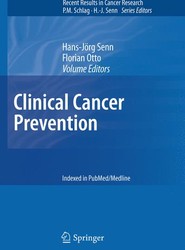(To see other currencies, click on price)
MORE ABOUT THIS BOOK
Main description:
Knowledge about diagnostic procedures in melanoma has in creased rapidly within the past few years. Single tumor cells have been identified in normal tissue such as sentinel lymph nodes, as well as in bone marrow, peripheral blood, and other bodily fluids and cells, by molecular technologies. The introduction of polymerase chain reaction-based methods can be regarded as a prototype of this dramatic development towards molecular approaches in new diagnostic procedures. This fact opens up the possibility of clinical use in patients and of influencing treatment strategies. Considerable discrepancies have been described, how ever, in the success rates of these new techniques for the detec tion of minimal residual disease in cancer patients. Despite fav orable results reported by different groups of investigators, it will take several years to define the clinical and pathophysiological relevance of new diagnostic procedures. The 1st International Symposium "Minimal Residual Disease in Melanoma: Biology, Detection and Clinical Relevance of Microme tastases", held in September 1999 in Homburg/Saar, Germany, fo cused on recent developments in this particular area of cancer re search. The purpose of the meeting was to stimulate discussion and exchange of new data and ideas by renowned international scientists. The aim of this volume is to summarize major topics of basic research and clinical investigations presented by invited experts in this fascinating but still. controversial field of melanoma re search.
Contents:
I Biology of Micrometastases and Advances in Methods for Detection.- The Biology of Melanoma Micrometastases.- Disseminated Tumor Cells: Diagnosis, Prognostic Relevance, and Phenotyping.- Nested Quantitative Real Time PCR for Detection of Occult Tumor Cells.- Detection of Micrometastasis Through Tissue-Specific Gene Expression: Its Promise and Problems.- Immunobead-Based Detection and Characterization of Circulating Tumor Cells in Melanoma Patients.- Rapid Enrichment and Detection of Melanoma Cells from PBMC by a New Assay Combining Immunomagnetic Cell Sorting and Immunocytochemical Staining.- II. Detection of Residual Melanoma Cells in the Peripheral Blood and Bone Marrow.- Reverse Transcriptase Polymerase Chain Reaction (RT-PCR) Detection of Melanoma-Related Transcripts in the Peripheral Blood and Bone Marrow of Patients with Malignant Melanoma. What Have We Learned?.- The Clinical Utility of Multimarker RT-PCR in the Detection of Occult Metastasis in Patients with Melanoma.- Polymerase Chain Reaction in the Detection of Circulating Tumour Cells in Peripheral Blood of Melanoma Patients.- Facts and Pitfalls in the Detection of Tyrosinase mRNA in the Blood of Melanoma Patients by RT-PCR.- Morphologically Intact Melanoma Cells May Be Detected in Peripheral Blood of Melanoma Patients.- Prognosis of Metastatic Melanoma: No Correlation of Tyrosinase mRNA in Bone Marrow and Survival Time.- III. Detection of Minimal Residual Disease in Sentinel Nodes.- The Predictive Value of the Sentinel Lymph Node in Malignant Melanomas.- Detection of Micrometastasis in Sentinel Lymph Nodes of Patients with Primary Cutaneous Melanoma.- IV. Early Recognition and Monitoring by Serological Markers.- Monitoring Malignant Melanoma with the S-100B Tumour Marker.- Melanoma Inhibitory Activity (MIA), a Serological Marker of Malignant Melanoma.- Quantification of Melanoma-Associated Molecules in Plasma/Serum of Melanoma Patients.- V. Clinical Relevance of Micrometastases Detection.- Molecular Tools in the Detection of Micrometastatic Cancer Cells - Technical Aspects and Clinical Relevance.- The Clinical Relevance of Molecular Staging for Melanoma.- Clinical Significance of PCR-Positive mRNA Markers in Peripheral Blood and Regional Nodes of Malignant Melanoma Patients.- Decrease in Circulating Tumor Cells as an Early Marker of Therapy Effectiveness.- VI. Therapeutic Strategies Against Residual Melanoma Cells.- Utility of Tests for Circulating Melanoma Cells in Identifying Patients Who Develop Recurrent Melanoma.- Active Specific Immunotherapy of Malignant Melanoma and Peptide Mimics of the Human High-Molecular-Weight Melanoma-Associated Antigen.- Autologous Dendritic Cells for Treatment of Advanced Cancer - An Update.- A Novel Strategy in the Elimination of Disseminated Melanoma Cells: Chimeric Receptors Endow T Cells with Tumor Specificity.
PRODUCT DETAILS
Publisher: Springer (Springer-Verlag Berlin and Heidelberg GmbH & Co. K)
Publication date: September, 2011
Pages: 280
Weight: 437g
Availability: Not available (reason unspecified)
Subcategories: Dermatology, General Issues, Oncology
From the same series
Friedhelm Raue
Thomas Ried
Christian Wittekind
Florian Otto
Markus W. Buchler
C. Stroszczynski
Manfred Dietel
H.-J. Senn
Otmar Schober
Jean-Nicolas Vauthey
Elmar Detering
Richard P. Baum
G. Mathe
R. Gross
Florian Otto
Uwe M. Martens
Michail Ignatiadis
Georges Mathe
M. S. Griem
Jack Cuzick
Michael Gnant
Ute Goerling
Hans-Jorg Senn
Werner H. Kirsten
F.A. Langley
Kuan-Teh Jeang
Janusz Jankowski
J. Bernard
Thomas Moehler
Andrea Tannapfel
S.K. Carter
R. S. Nelson
Kerry S. Courneya
Rolf D. Issels
Hans-Jorg Senn
Florian Otto
W. Fischbach
Umberto Veronesi
Otmar Schober
Paul M. Schneider
Hans-Jorg Senn
Wolfgang Tilgen
Jean-Nicolas Vauthey
Richard P. Baum
J. L. Hayward
W. H. Kirsten
Henry T. Lynch
Georges Mathe
G. T. Pack
Leon Goldman
Charles G. Moertel
R.G. Freeman
L. Manuila
Agnes Glaus
Rudiger Liersch
Richard Schindler
Uwe M. Martens
W.A. Fuchs
Michail Ignatiadis
Edward S. Meek
P. Roy-Burman
Merle Mizell
Jean Lindenmann
Pavel Koldovsky
Enrico Anglesio
Georges Mathe
Hans-Jorg Senn
James H. Goldie
Donald Metcalf
Siegfried Seeber
Israel Penn
B. Sokoloff
Manfred Schwab
E. Grundmann
H.-D. Pape
Robert S. Nelson
G. Mathe
J. Lange
G. Bonadonna
J. Szymendera
H. B. Marsden
K. E. Stanley
E. Grundmann
C. Bohuon
Pierre Denoix
A. C. Templeton
Ekkehard Grundmann
Michael Wannenmacher
Ivan Damjanov
Wolf-Dieter Ludwig
Friedhelm Raue
M. L. Jacobs
H.K. Muller-Hermelink
Rita Engenhart-Cabillic
E. Grundmann
Peter M Schlag
E. Grundmann
Ekkehard Grundmann
G. Mathe
Donald Metcalf
S. Brunner
F. F. Holmes
G. Mathe
G. Mathe
Pierre Band
Stephen C. Schimpff
K. Schwemmle
Michael Gnant
K. Hoffken
Friedhelm Raue
H. R. Scheurlen
Aron Goldhirsch
H. Acker
Hans-Jorg Senn
F. G. J. Hayhoe
William Duncan
E. Thiel
Hans-Jorg Senn
K. Musshoff
Hans-Jorg Senn
A. Rossi-Fanelli
Peo C. Koller
Volker Diehl
K. Hoffken
H.-J. Senn
Bruce S. Schoenberg
G. St. Arneault
S.K. Carter
B. Henningsen
J. Hekmatpanah
G. Mathe
E. Grundmann
Hans-Jorg Senn
G. Mathe
Sam Brunner
Hans-Jorg Senn
V. Hofmann
Michael Wannenmacher
G. Wagner
Hans-Jorg Senn
Rudolf Pichlmayr
Frank M. Torti
Michael Wannenmacher
William Duncan
G. Mathe
M. Bamberg
H.-P. Lohrmann
E. Grundmann
Niels Neymark
Peter M Schlag
P. Koldovsky
G. Nass
W. Duncan
Ekkehard Grundmann
Richard P. Gallagher
Hans-Jorg Senn
W. Duncan
W. Duncan
S.K. Carter
Michael Molls
Sam Brunner
Peter Boyle
Maurizio Ponz de Leon
Gunter Burg
K. Hoffken
H.-J. Senn
F.W. Schildberg
Beat Thurlimann
Janusz Jankowski
Thomas Moehler
Andrea Tannapfel
Kerry S. Courneya
H.-J. Senn
Per-Ulf Tunn
Andreas von Deimling
Antonella Surbone
Ursula Kapp
Hans-Jorg Senn
Santiago Gonzalez-Moreno
Hanno Riess
Paul M. Schneider
Uwe M. Martens
Rudiger Liersch
Renzo Brun del Re
Andreas von Deimling
Ursula Kapp
Per-Ulf Tunn
Hanno Riess
Antonella Surbone
Manfred Dietel
Santiago Gonzalez-Moreno
Louis Denis
H.-J. Senn
C. Stroszczynski






























































































































































































































